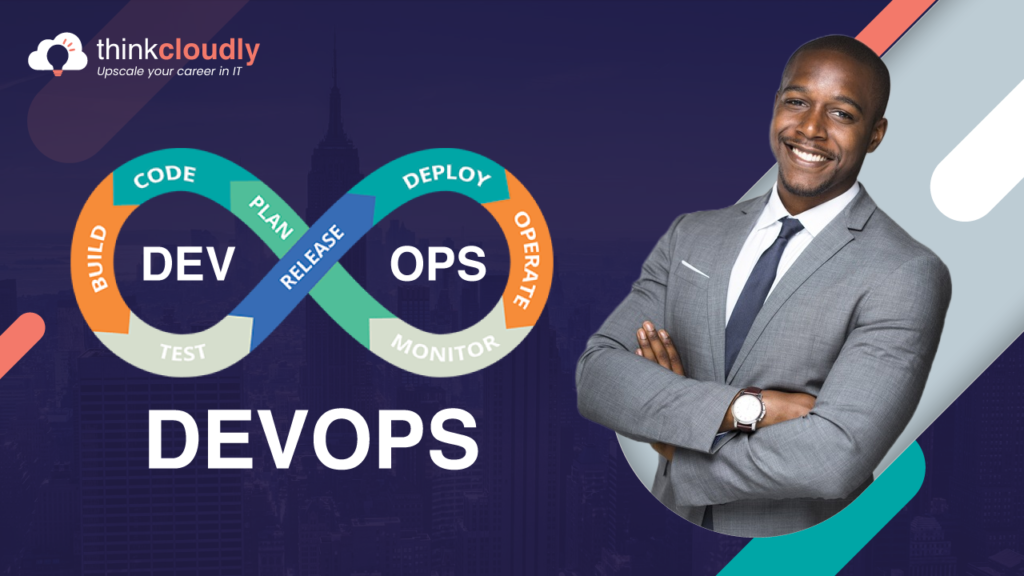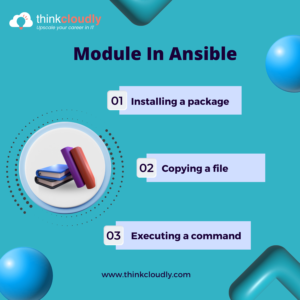“What Jenkins does for software development, similar to Ansible does for IT tasks. Automation is better if we have a unique technique for everything!”
Ansible is an open-source automation tool that allows users to automate IT tasks such as configuration management, application deployment, and task automation. It uses a client-server architecture, where the control node (server) communicates with remote nodes (clients) over SSH or WinRM (Windows Remote Management) protocols. Ansible is agentless, meaning it doesn’t require any agents to be installed on remote nodes, which makes it easy to deploy and manage. It is also highly scalable, allowing users to manage thousands of nodes with ease.
You would have read this definition and introductions in many documents but the real task is to help you prepare for the interview days.
Ansible Interview Q&A: Expertise Exploration
Preparing for an Ansible interview involves reviewing a comprehensive set of interview questions and answers tailored to assess your expertise in this powerful automation tool. These interview questions for Ansible cover various aspects, ranging from basic concepts to advanced use cases. They delve into topics like Ansible playbook structure, modules, inventory management, roles, and best practices for efficient automation workflows. Familiarity with these questions and their corresponding answers equips you with the knowledge needed to confidently discuss your experience and skills during an Ansible interview.
Preparing for an interview as a DevOps engineer, it’s crucial to be well-versed in Ansible, a powerful automation tool widely used in the industry. To help you succeed, we’ve compiled a comprehensive list of Ansible interview questions and answers that cover a wide range of topics. These Ansible interview questions will not only test your knowledge but also provide valuable insights into how effectively you can automate tasks, manage configurations, and orchestrate complex IT infrastructures. Whether you’re a seasoned Ansible pro or just getting started, mastering these interview questions for Ansible will undoubtedly boost your confidence and set you on the path to a successful interview.
Here are some best Ansible interview questions and answers.
We have prepared a researched sequence of Ansible interview questions and answers that will help you in proving the credibility of your professional skills in the interview. So let’s jump into it!
Question:1 What is Ansible?
Answer: Ansible is an open-source automation tool that simplifies IT orchestration and management by automating the deployment, configuration, and management of systems and applications.
Question: 2 How does Ansible differ from other configuration management tools?
Answer: Ansible differs from other configuration management tools in that it does not require an agent to be installed on the managed nodes. Instead, Ansible uses SSH to connect to and manage remote machines, which simplifies the setup and maintenance.
Question:3 What is a playbook in Ansible?
Answer: A playbook is a text file written in YAML that contains a series of tasks to be executed on one or more hosts. Playbooks are the primary way to organize and execute Ansible tasks.

Build Your Career as a
DevOps Engineer
- Live Projects
- Resume / Interview Preparation
Question:4 Can you explain the role of an inventory file in Ansible?
Answer: An inventory file in Ansible is a list of managed nodes, organized into groups. The inventory file is used to define the hosts on which Ansible will execute tasks and to assign variables to those hosts.
Question:5 What is a task in Ansible?
Answer: A task in Ansible is a set of instructions to be executed on a host. Tasks are organized into playbooks and are used to configure or manage the system.
Want to ensure your Jenkins job? Explore our DevOps: Red Hat Ansible Certification Course(EX407) training course.
Question:6 Can you explain the purpose of a module in Ansible?
Answer: A module in Ansible is a piece of code that performs a specific action on a managed node, such as installing a package, copying a file, or executing a command. Modules can be executed by tasks in playbooks.
Boost your earning potential with Devops expertise. Explore our certified Devops courses for a high-paying career
- Explore azure devops certification
Question:7 What is idempotency in Ansible?
Answer: Idempotency in Ansible means that running the same task multiple times should result in the same outcome, without causing any additional changes to the system. This ensures that Ansible playbooks are predictable and consistent.
Question:8 How does Ansible handle dynamic inventory?
Answer: Ansible can handle dynamic inventory by allowing users to write custom scripts that generate inventory files dynamically based on certain criteria, such as tags or hostnames.
Question:9 Can you explain the role of roles in Ansible?
Answer: Roles in Ansible are a way to organize and reuse sets of tasks and other components. Roles can be thought of as reusable units of code that can be shared across multiple playbooks.
Question:10 What is the purpose of a handler in Ansible?
Answer: A handler in Ansible is a special type of task that is only executed if notified by another task. Handlers are typically used to restart services or perform other actions after a configuration change has been made.
Question:11 How does Ansible manage package installation across different operating systems?
Answer: Ansible uses modules to manage package installation across different operating systems. Each module is designed to work with a specific operating system and package manager, ensuring that the correct package is installed on each host.
Question:12 Can you explain how variables work in Ansible?
Answer: Variables in Ansible are used to store values that can be reused across multiple tasks or playbooks. Variables can be defined at various levels, such as the playbook level or the role level, and can be overridden as needed.
Question:13 How does Ansible ensure security during communication between hosts?
Answer: Ansible uses SSH to communicate between hosts, which provides encryption and secure authentication. Additionally, Ansible can use encrypted data stores and vaults to protect sensitive data.
Question:14 What is a vault in Ansible?
Answer: A vault in Ansible is a way to protect sensitive data, such as passwords or keys, by encrypting them. The encrypted data can be stored in a file or passed as a variable to a task or playbook.
Question:15 What is the purpose of a fact in Ansible?
Answer: A fact in Ansible is a system attribute, such as the operating system version or the IP address, that can be used to make decisions in playbooks or tasks.
Question:16 Can you explain how Ansible roles can be structured?
Answer: Ansible roles can be structured in a variety of ways, but the most common structure includes tasks, handlers, templates, files, and defaults directories, as well as a meta/main.yml file that contains role metadata.
Question:17 How does Ansible handle errors during playbook execution?
Answer: Ansible can handle errors during playbook execution by stopping the playbook and reporting the error. Ansible also provides options to ignore errors, retry failed tasks, or fail the playbook on certain conditions.
Question:18 What is the difference between a static and dynamic inventory in Ansible?
Answer: A static inventory in Ansible is a file or list of hosts that is defined and maintained manually, while a dynamic inventory is generated automatically by a script or plugin based on certain criteria.
Question:19 Can you explain how Ansible supports infrastructure as code?
Answer: Ansible supports infrastructure as code by allowing users to define and manage their infrastructure using code, rather than manual configurations. Ansible playbooks can be stored in version control systems, providing a complete audit trail of changes.
Question:20 How do Ansible support versioning and rollback?
Answer: Ansible supports versioning and rollback by storing playbooks and other components in version control systems, such as Git. Users can roll back to a previous version of a playbook if necessary.
Question:21 What is the difference between a task and a role in Ansible?
Answer: A task in Ansible is a set of instructions to be executed on a host, while a role is a collection of tasks, variables, and other components that can be reused across multiple playbooks.
Question:22 Can you explain how Ansible handles file transfers between hosts?
Answer: Ansible uses the copy and template modules to handle file transfers between hosts. The copy module can transfer files directly, while the template module can dynamically generate files based on variables and templates.
Question:23 How does Ansible support infrastructure testing and validation?
Answer: Ansible supports infrastructure testing and validation by providing modules for running tests and validating the state of the system. Ansible can also integrate with testing frameworks such as Test Kitchen and Serverspec.
Question:24 Can you explain how Ansible handles role dependencies?
Answer: Ansible handles role dependencies by allowing roles to declare dependencies on other roles in their meta/main.yml file. Ansible will automatically download and install the required roles when the playbook is run.
Question:25 What is the purpose of the Ansible Galaxy?
Answer: The Ansible Galaxy is a community repository for Ansible roles, modules, and plugins. Users can search for and download pre-built roles from the Galaxy to use in their playbooks.
Conclusion for Ansible interview questions and answers:
The Internet gives you access to lakhs of Ansible interview questions and answers but you are going to be questioned filtered 10-15 on your interview day. Thinkcloudly is here to research that with our expert and come up with those required sets of Ansible interview questions and answers. The above-mentioned guide is your helping hand for that one preparation of basics to show your professionalism.
You can explore more Ansible interview questions and answers for free in our blog sections. We will be coming up with new informative content till then keep learning. Happily Thinkcloudly!
Explore our free video content to learn easily on YouTube.











